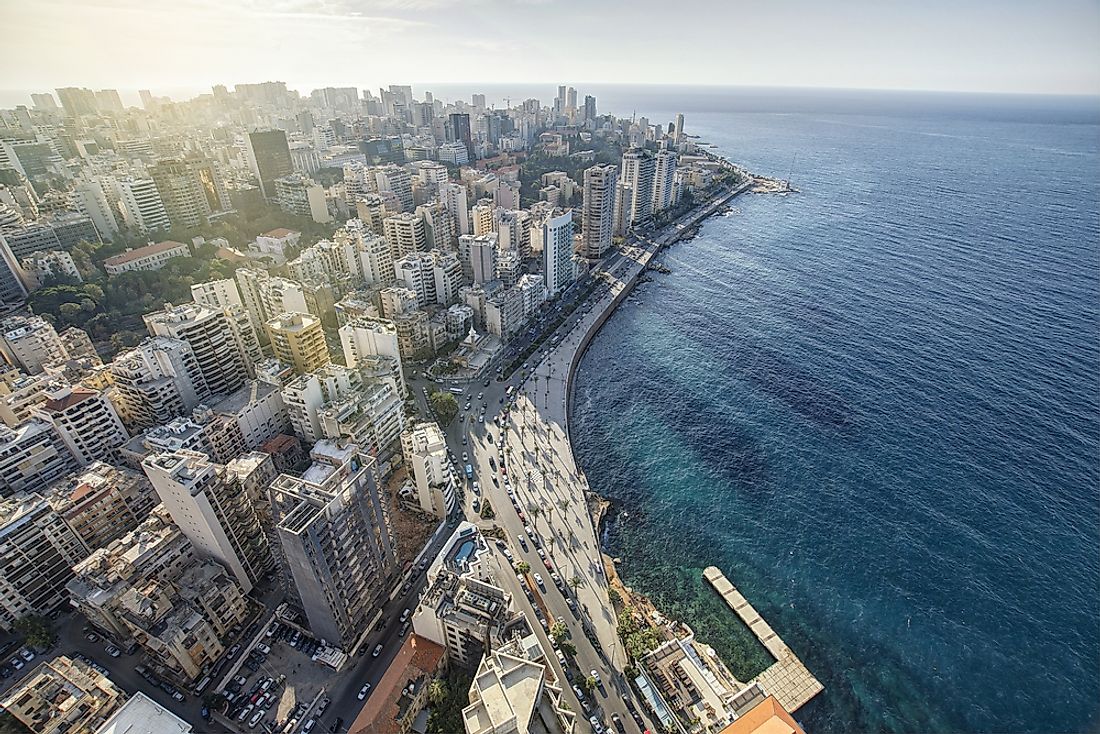Biggest Cities In Lebanon

Lebanon’s cities have been in existence for many centuries and have been home to ancient civilizations, whose evidence are in the architectural remains, pottery, and recorded materials. The cities have been influenced by the various people who settled within there in different periods. Religiously, the cities have been mentioned in the Scriptures of different religious groups. While these ancient cities have adjusted to cater for modern growth, parts of the traditional cultural heritage have been retained in museums and within the cities. This heritage is an important tourist, research, and archaeological attraction.
The Four Biggest Cities In Lebanon
Beirut
Beirut is Lebanon’s capital, the largest and the most populous with a population of 1,916,100 people. The ancient city is the most important commercial port in Lebanon with commercial trading points, banks, and local and foreign businesses. Its rich cultural heritage has developed over centuries of interaction with different people from various countries and societies. The town attracts a huge number of tourists to the museums such as the National Museum of Beirut, the Sursock Museum, and the Archaeological Museum of the American University of Beirut. Beirut has hosted many sporting activities such as the Pan Arab Games in its stadiums; Camille Chamoun Sports City Stadium and the Beirut Municipal Stadium.
Tripoli
Tripoli is the second largest and second most populous city located in the northern region of Lebanon. Tripoli has a population of 229,398 people. Like Beirut, Tripoli is an ancient city with a great archaeological importance due to its rich architectural heritage that has developed throughout the centuries of its existence. Tripoli served as an important financial center and a port during the early centuries of its establishment and has remained a major port in Lebanon. The city has important tourist attractions such as the clock tower and the Palm Islands Nature Reserves. Tripoli is an important religious center with mosques and churches, educational center, and transport and communication center.
Sidon
Sidon is the third most populous city in Lebanon with a population of 163,554. The city existed from the prehistoric times through the modern times carrying with it evidence of the cultures of its inhabitants through their diverse architecture, pottery, and sculptures. Sidon has important trading facilities, health centers, schools, churches, mosques, and entertainment centers. The city is mainly based on agricultural activities such as wheat farming. Pollution is a major issue in the city due to dangerous dumping sites with materials that are damaging to the sea affecting the quality of fish, besides endangering the lives of the residents.
Tyre
Tyre existed in the ancient times as a Phoenician city and is currently one of the largest cities in Lebanon with a population of 135,204. After its founding in about 2750 BCE, tyre grew to become a prosperous trading center. The island city was a victim of sieges by various rulers throughout the centuries. Tyre was renowned for the production of purple dye that was used exclusively by the royalty. The city eventually fell with the demise of the Roman Empire. Today the city has been designated as a UNESCO world Heritage Site due to itsr significant role in history and antique architecture. Some of the oldest buildings in Tyre face the risk of destruction through wars and modern development.
Cities Of Lebanon Today
Most of the major cities of Lebanon are located along the coast and serve as primary port centers in the country and trading points for merchants from different continents. Among large cities are Nebatiye et Tahta, Habbouch, Djounie, Zahle, Baalbek and En Naqoura.
The Biggest Cities In Lebaon
| Rank | Name Of City | Population |
|---|---|---|
| 1 | Beirut | 1,916,100 |
| 2 | Tripoli | 229,398 |
| 3 | Sidon | 163,554 |
| 4 | Tyre | 135,204 |
| 5 | Nabatîyé et Tahta | 120,000 |
| 6 | Habboûch | 98,433 |
| 7 | Djounie | 96,315 |
| 8 | Zahle | 78,145 |
| 9 | Baalbek | 30,916 |
| 10 | En Nâqoûra | 24,910 |











